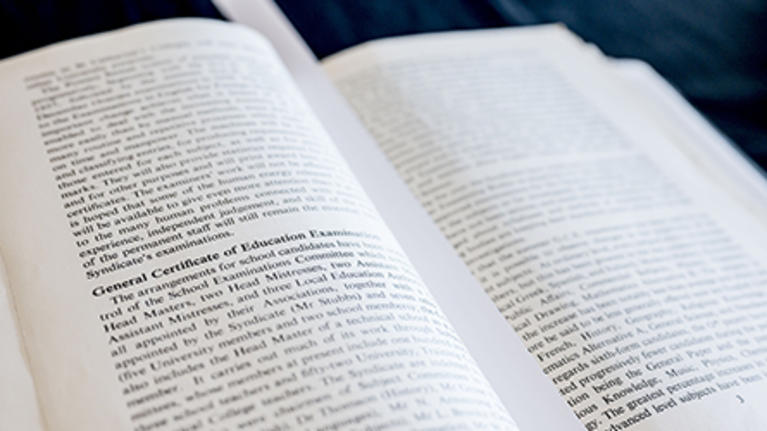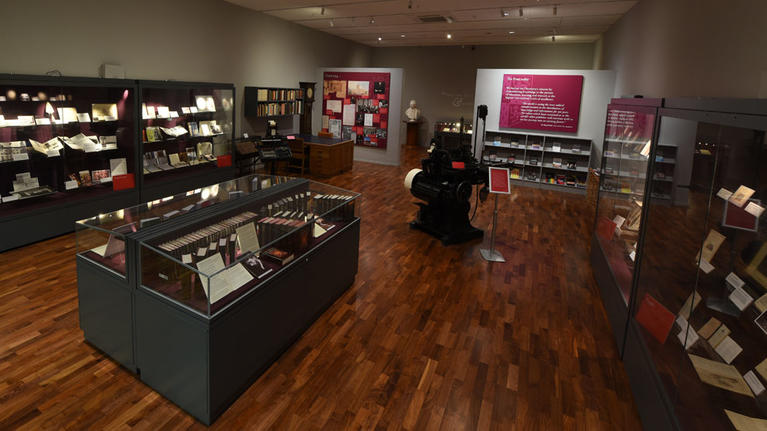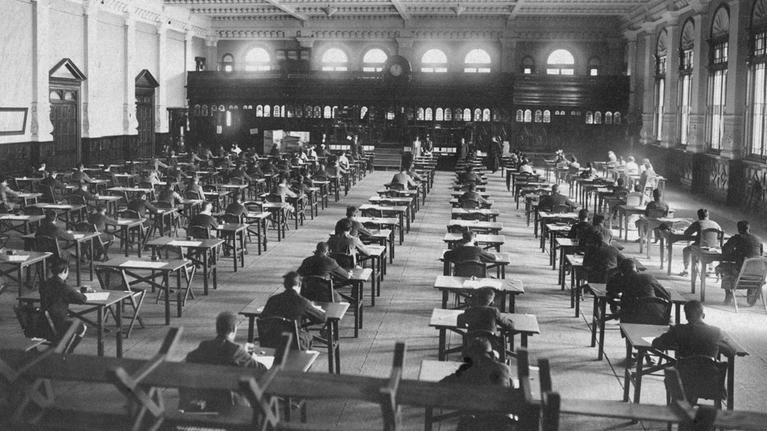The Press Archive
Housed in Cambridge University Library, the Press archive contains a huge array of documents both ancient and modern – many of them publicly accessible. It is a treasure trove of information for researchers of all kinds, with records stretching from the earliest beginnings of printing in Cambridge through to the present day.
These include books of minutes, photographs, building plans, financial records, printing ledgers, art work, press cuttings, and author files containing correspondence with some of the greatest figures of literature, science and philosophy. Together they tell the story of the people and the changing technologies of Cambridge University Press.
Since 2010 this remarkable collection has been in the care of a dedicated archivist, with dedicated conservation work being undertaken since 2014. Together they work to ensure its tens of thousands of items are properly preserved, stored, catalogued and available to researchers.
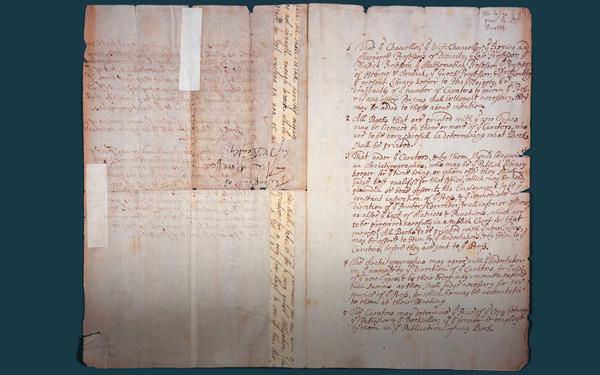
The Design of the Press
Written by Richard Bentley, a classical scholar, theologian and Master of Trinity College, Cambridge in 1696. It sets out the blueprint for an autonomous Press, governed by the University, with its own printer, buildings and type.
The University Library with its environmentally controlled strong rooms, reading rooms and experienced team is the perfect home for the archive and it is through the Library that people can arrange to view the collection.
The Library is also home to Letters Patent, granted to the University by Henry VIII in 1534, which allowed the stationers in Cambridge to print ‘all manner of books’ and is considered the Press’s founding document.The archive also serves as a valuable resource for the present day business, providing information, inspiration and a body of recorded memory spanning the centuries.
The archive also serves as a valuable resource for the present day business, providing information, inspiration and a body of recorded memory spanning the centuries.
Among the earliest records in the Press archive is the articles of the first university printer, Thomas Thomas, dating from 1585/6. These sought to control Thomas’ activities and avoid financial risk.
Also preserved is the Design of the Press, written by the scholar and theologian Richard Bentley in 1696, laying out the structure and governance of an autonomous University Press with its own printer, buildings and type.
The records of that more autonomous Press really begin in 1696, with the first minutes of the Press Syndicate. Those minutes continue in an unbroken series right through to the present day, forming a unique record of publishing decisions taken over more than three centuries.
For many researchers, the greatest draw is the archive’s author correspondence files. These date back to the 1890s and include some of the great names of 20th century authorship, with about 27,000 named individuals in the collection.
Among them are the writers JB Priestly and CP Snow; the philosophers Bertrand Russell and Alfred North Whitehead, and the great early 20th Century scientists Ernest Rutherford, JJ Thompson and Albert Einstein. There are reader reports too, with luminaries like EM Forster, Alan Turing, John Maynard Keynes, and JRR Tolkien writing to recommend the acceptance or the decline of manuscripts. These give the archive a real richness and depth, revealing networks of influence and providing an invaluable research resource.
The archive also serves as a valuable resource for the present day business, providing information, inspiration and a body of recorded memory spanning the centuries. It is this knowledge which is the archive’s greatest treasure – a detailed picture of decisions taken and of the people who have worked here and given life to the Press.
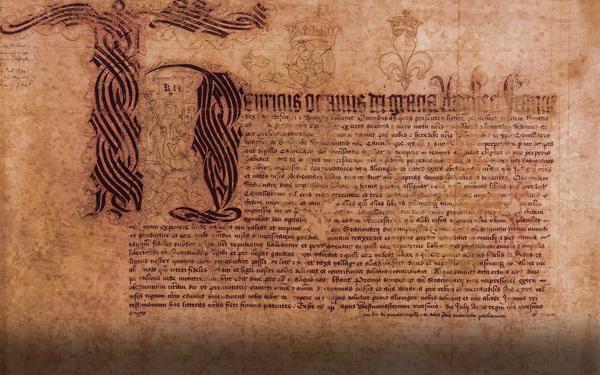
Letters Patent
Letters Patent were a form of open letter, used by the monarch to make public their decisions. Those issued to the University of Cambridge in 1534 were essentially an exemption from laws that would have otherwise prevented foreign-born stationers in the city from carrying on their trade. The document states that the stationers have ‘incontestable power’ to print ‘all manner of books’, provided they are approved by the University. In doing so, it lays the foundations of a system that continues to this day.
The Library is also home to Letters Patent, granted to the University by Henry VIII in 1534, which allowed the stationers in Cambridge to print ‘all manner of books’ and is considered the Press’s founding document.
For Dr. James Freeman, medieval manuscripts specialist at Cambridge University Library, this is an example of the law of unintended consequences. He said: “It was intended to fulfil a very specific need at the time, to allow them to continue the trade they had been conducting for some years, but by including additional clauses about printing it opened the door to an entirely different set of activities.”
As very public evidence of royal favour, Letters Patent were often very beautifully decorated by the proud recipients. In this case, the initial letter H is produced with a calligraphic flourish known as a cadel and encloses a depiction of the King in majesty, enthroned with an orb and sceptre. It is also ornamented with royal emblems: the Tudor rose and the fleur de lys, which represent the King’s authority in England but also his claim to the French throne.
The text was written in the Chancery – the department responsible for the production of official documents – in a distinctive form of handwriting known as Chancery hand and follows a pattern set down in the reign of Richard II.



